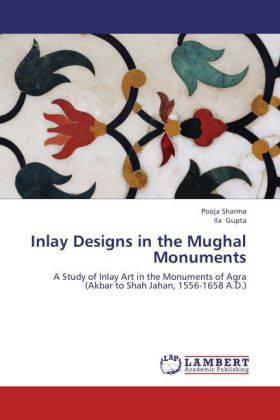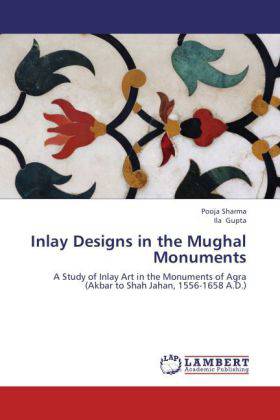
Je cadeautjes zeker op tijd in huis hebben voor de feestdagen? Kom langs in onze winkels en vind het perfecte geschenk!
- Afhalen na 1 uur in een winkel met voorraad
- Gratis thuislevering in België vanaf € 30
- Ruim aanbod met 7 miljoen producten
Je cadeautjes zeker op tijd in huis hebben voor de feestdagen? Kom langs in onze winkels en vind het perfecte geschenk!
- Afhalen na 1 uur in een winkel met voorraad
- Gratis thuislevering in België vanaf € 30
- Ruim aanbod met 7 miljoen producten
Zoeken
Inlay Designs in the Mughal Monuments
A Study of Inlay Art in the Monuments of Agra (Akbar to Shah Jahan, 1556-1658 A.D.)
Pooja Sharma, Ila Gupta
Paperback | Engels
€ 86,45
+ 172 punten
Omschrijving
Indian artisanship, one of the most creative and richest traditions in the world, blossomed rapidly during the reign of the Mughal dynasty (1526 to 1707 A.D.). The study focused on identification of inlay motifs, design functionality, origin and development of inlay art, factors responsible for inlay designs, aesthetic philosophy, and influence of other arts. In summary, the Mughal inlay art was developed indigenously and bloomed during the period of Jahangir. He had introduced a variety of motifs in inlay such as Hindu inlay designs swastikas, satkona, lotus and Chinese cloud band. Healthy fusion of traditions and cultural aspects of Persian, Hindu, Islamic and Chinese is also reflected in inlay designs. Artistic presentation of inlay designs with unity, harmony and colour symbolism evoked rasas and bhavas (i.e., adbhuta, veera, shringar, shanta, karuna and raudra rasas)-which had left a long-lasting impression on the present world of designers, artisans and viewers.
Specificaties
Betrokkenen
- Auteur(s):
- Uitgeverij:
Inhoud
- Aantal bladzijden:
- 136
- Taal:
- Engels
Eigenschappen
- Productcode (EAN):
- 9783847379072
- Verschijningsdatum:
- 31/07/2012
- Uitvoering:
- Paperback
- Formaat:
- Trade paperback (VS)
- Afmetingen:
- 152 mm x 229 mm
- Gewicht:
- 208 g

Alleen bij Standaard Boekhandel
+ 172 punten op je klantenkaart van Standaard Boekhandel
Beoordelingen
We publiceren alleen reviews die voldoen aan de voorwaarden voor reviews. Bekijk onze voorwaarden voor reviews.









